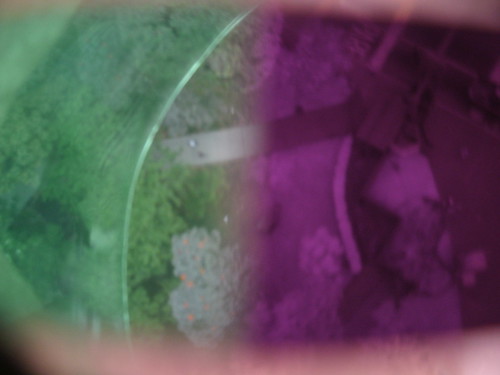This past Wednesday, a group from the National University of Engineering and University of Ricardo Palma in Lima, Peru performed a series of experiments, testing a new aerial infrared/visible light photography system and prototyping a hybrid kite/balloon design for aerial photography.
These tests, the result of a collaboration between the above-mentioned universities and the Public Laboratory for Open Technology and Science, demonstrate, albeit in prototype form, the ability to perform advanced image analysis such as NDVI and NRG to measure the health of vegetated areas at low cost. A hybrid balloon-kite would allow us to gather all kinds of aerial data en adverse weather conditions -- such a hybrid could fly in light or unpredictable winds and might carry a heavier payload.
To keep the payload weight low, we attempted modification of a single camera to take both infrared and visible light at the same time. We followed the normal procedure for removing the infrared filter from our camera, but then created a 'bifocal' filter using the IR filter and its opposite, a piece of negative film. This, attached to the lens, allowed us to take photos of both bands simultaneously, though the exposure setting had to be a compromise between the two filters. We hoped to solve the problem of triggering two cameras simultaneously, however since the two areas did not overlap we still relied on luck to achieve full coverage in both bands.
Our hybrid design started with a balloon (made from a mylar emergency sleeping bag) with a kite below, much like the form of a commercial airliner. However, due to lack of wind, we added a second balloon, which ruined the aerodynamics of the design, and even after several modifications, it did not seem to fly better than balloons alone. We've made plans to explore different approaches in a workshop late next week.
The bifocal filter worked well, but the camera shifted during flight and part of the protective soda bottle housing entered the image, causing the camera to focus improperly. Our photos were therefore quite blurry -- a fact also influenced by low light due to how late we flew after our aerodynamic difficulties. Exhausted, we decided to finish up and try again another day in more ideal conditions.




1 Comments
But in the end: http://publiclaboratory.org/notes/warren/1-7-2011/great-shot-ndvi
Reply to this comment...
Log in to comment
Login to comment.